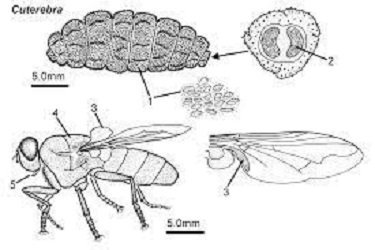
Wolf worms, known scientifically as larvae of the botfly, have a rather peculiar lifestyle. Unlike typical parasites that consume their host’s nutrients, wolf worms have a more intricate game plan. They ensure their survival while still allowing their host to live, though their presence can definitely lead to some discomfort. So, if you’re curious about the ins and outs of wolf worm behavior, you’re in for an intriguing ride!
What Are Wolf Worms?
Wolf worms are the larval stage of a type of botfly, primarily found in the Americas. They latch onto various mammals, including dogs and humans, to develop. Unlike some parasites that might seem cruel, wolf worms have a unique relationship with their hosts. They enter the body through the skin, creating a small wound where they’ll grow and thrive.
These worms can be visually striking, often resembling a small, plump caterpillar. They live in tissues—sometimes under the skin—where they may even create a breathing hole. This hole allows them access to oxygen while they feed on tissue fluids, causing irritation and inflammation in the area. If you’ve ever had an insect bite that wouldn’t stop itching, imagine that discomfort multiplied!
How Do Wolf Worms Enter Their Hosts?
Wolf worms don’t just stroll into their hosts like guests at a party. Instead, they have a clever way of getting inside. The female botfly lays her eggs on a mosquito or other biting insect. When the insect bites a mammal, the warmth of the host’s body stimulates the eggs to hatch. That’s right, the larva hitches a ride and takes the opportunity when the host least expects it!
Once the larvae enter the host’s skin, they find a cozy spot to burrow into the tissue. Their entry method can lead to red, inflamed bumps on the skin, similar to an ordinary bug bite, but with a twist. Those bumps can be quite painful as the larvae mature, making their presence known. If you’re ever in a region where wolf worms are common, it’s wise to keep an eye out for those telltale signs.
Behavior Inside the Host
Once settled comfortably inside, wolf worms start displaying some fascinating behaviors. They thrive by feeding on the tissue and fluids, but they also engage in some rather interesting activities. For instance, wolf worms can move inside the tissue, which might make you squirm a bit. This movement helps them navigate and find the best spots to soak up nutrients.
Interestingly, these larvae don’t just feast aimlessly. They have a rhythm to their feeding, often alternating between periods of activity and rest. You might be wondering, “Is that normal?” Well, yes—it’s part of their growth cycle. They create a breathing hole in the skin, gently pushing out any excess tissue as they grow bigger. By doing this, they ensure they get enough oxygen without drawing too much attention to themselves.
Effects on the Host
The presence of wolf worms can have various effects on their hosts, especially if they’re not treated promptly. The initial entry can cause swelling and itching, leading to discomfort. Some hosts might experience mild infections due to the tissue damage caused by the worms. However, in many cases, the host might not realize they have a wolf worm inside them until symptoms intensify.
As the worm grows, it may cause the area around it to become highly sensitive. Think of it like having an unwelcome guest who keeps knocking on the door—you might start feeling irritated! In severe cases, if left untreated, the surrounding tissue can become necrotic, meaning it starts to die off. This severity usually calls for medical intervention to remove the larvae and treat any potential infections.
Treatment and Prevention
So, how do you deal with wolf worms if you or your pet happens to fall victim? First and foremost, it’s crucial to seek medical treatment. Most healthcare providers can easily identify wolf worm infections by examining the wound. Treatment often involves safely excising the larva, which can be done through a simple procedure.
To prevent these uninvited guests, keep an eye on your pets, especially if they spend a lot of time outdoors. Regularly checking for any unusual bumps or irritations and maintaining their health can help keep wolf worms at bay. Also, using insect repellents can be a helpful preventive measure when spending time in areas known for botflies.
Wolf worms might not be the most pleasant topic to think about, but understanding their behavior in host tissue is essential. These unique larvae exhibit fascinating yet complex interactions with their hosts, from their sneaky entry methods to their growth patterns. While they can certainly cause discomfort, the good news is that treatment options are available.
Just like any intriguing story, the tale of wolf worms is a reminder of nature’s complexity and adaptability. So, if you find yourself exploring the great outdoors or spending time with your four-legged friends, stay informed and proactive. That way, you can appreciate the wonder of wildlife without the worry of unwanted guests!
